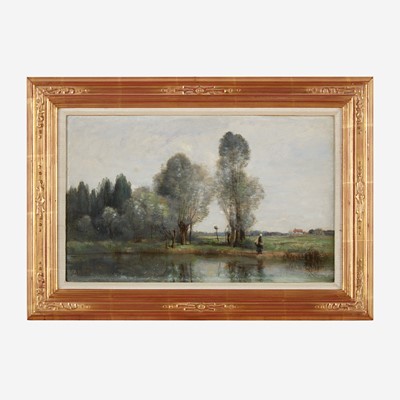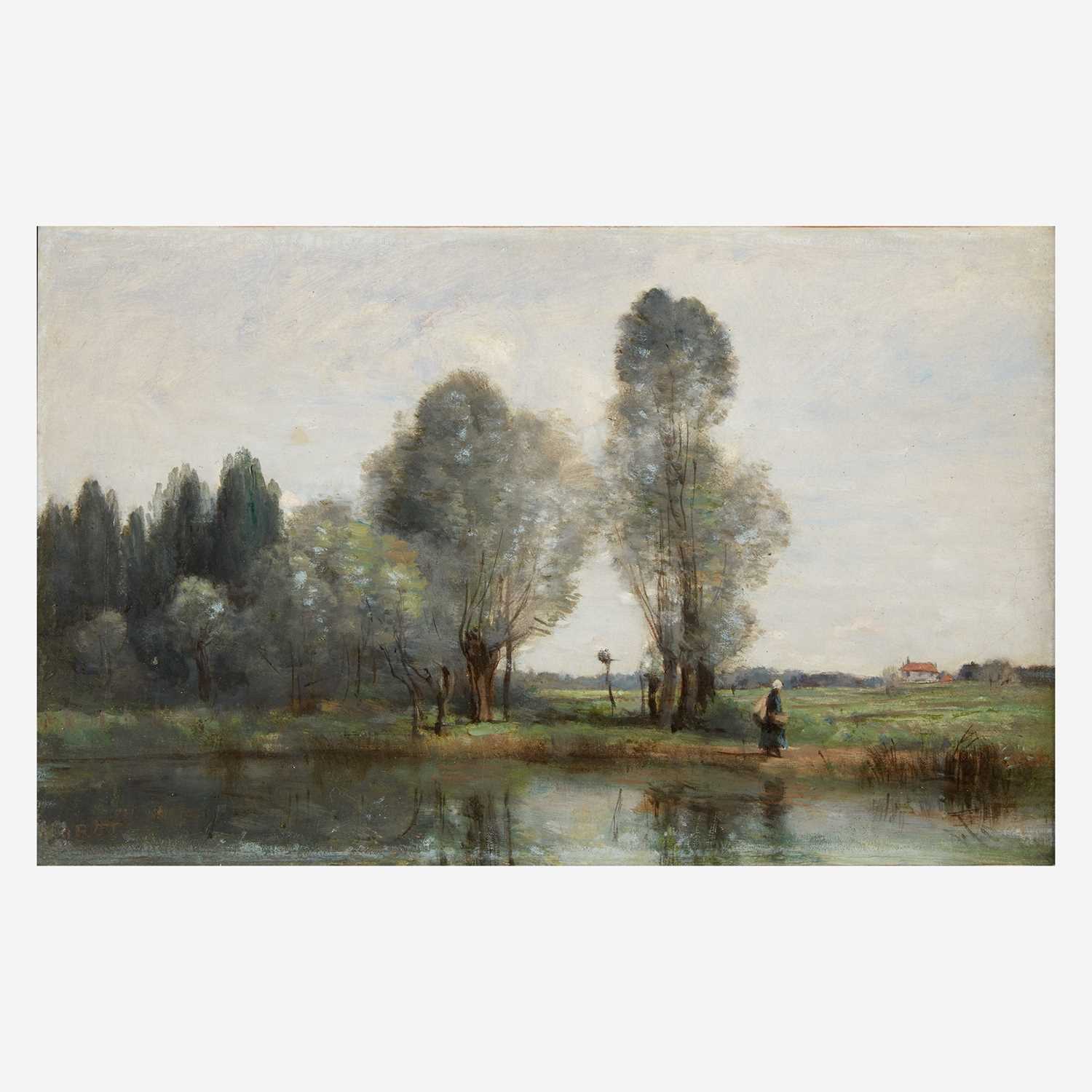February 22, 2022 12:00 EST
European Art and Old Masters
30
Jean-Baptiste-Camille Corot (French, 1796–1875)
Saules Près d'un Ruisseau. Limousin
Signed 'COROT' bottom left, oil on canvas
9 5/8 x 15 1/4 in. (24.4 x 38.7cm)
Executed circa 1850-1860.
Provenance
"Vente de 38 Tableaux de Corot," Paris, April 14, 1858, lot 34.
Acquired directly from the above sale.
Collection of Gustave Claudon, Paris.
By descent to his widow, Madame Claudon.
Acquired directly from the above in 1896.
Boussod, Valadon et Cie., Paris.
Newhouse Galleries Inc. New York, New York.
Acquired directly from the above.
Private Estate, New Jersey.
Sold for $91,350
Estimated at $40,000 - $60,000
Signed 'COROT' bottom left, oil on canvas
9 5/8 x 15 1/4 in. (24.4 x 38.7cm)
Executed circa 1850-1860.
Provenance
"Vente de 38 Tableaux de Corot," Paris, April 14, 1858, lot 34.
Acquired directly from the above sale.
Collection of Gustave Claudon, Paris.
By descent to his widow, Madame Claudon.
Acquired directly from the above in 1896.
Boussod, Valadon et Cie., Paris.
Newhouse Galleries Inc. New York, New York.
Acquired directly from the above.
Private Estate, New Jersey.
Exhibited
"Exposition Organisée Au Profit Du Monument Du Centenaire de Corot," Palais Galliera, Paris, May-June, 1895, no. 38 (as Saules Près d'un Ruisseau).
Literature
André Schoeller, Jean Dieterle, Premier Supplément à 'L'Oeuvre de Corot' par A. Robaut et Moreau-Nélaton, Éditions Floury, Paris, 1905, Éditions des Arts et Métiers Graphiques, Paris, 1948 pp. 46-47, no. 40 (illustrated).
Note
Corot particularly liked the Limousin region, a lush part of central France known for its quaint hamlets, stone villages and quiet streams. From 1846, he would often sojourn there in the summer, inspired by the overall quietude of the place. The present work is quintessential in that it represents Limousin’s characteristic topography, mixed-in with elements that Corot gleaned and brought back from his trips to Italy, contributing to a highly lyrical landscape. One admires the simplicity and overall poetry at play here, a result of Corot’s synthetized heritage of both Barbizon School and classical landscape painting from the 17th century. The present painting was in fact so representative of Corot’s art that it was included in the highly selective Memorial exhibition celebrating Corot’s 100th birthday in 1895 at Palais Galliera, where it was shown among Corot’s similarly famous plein-air sketches, and later Souvenirs.


